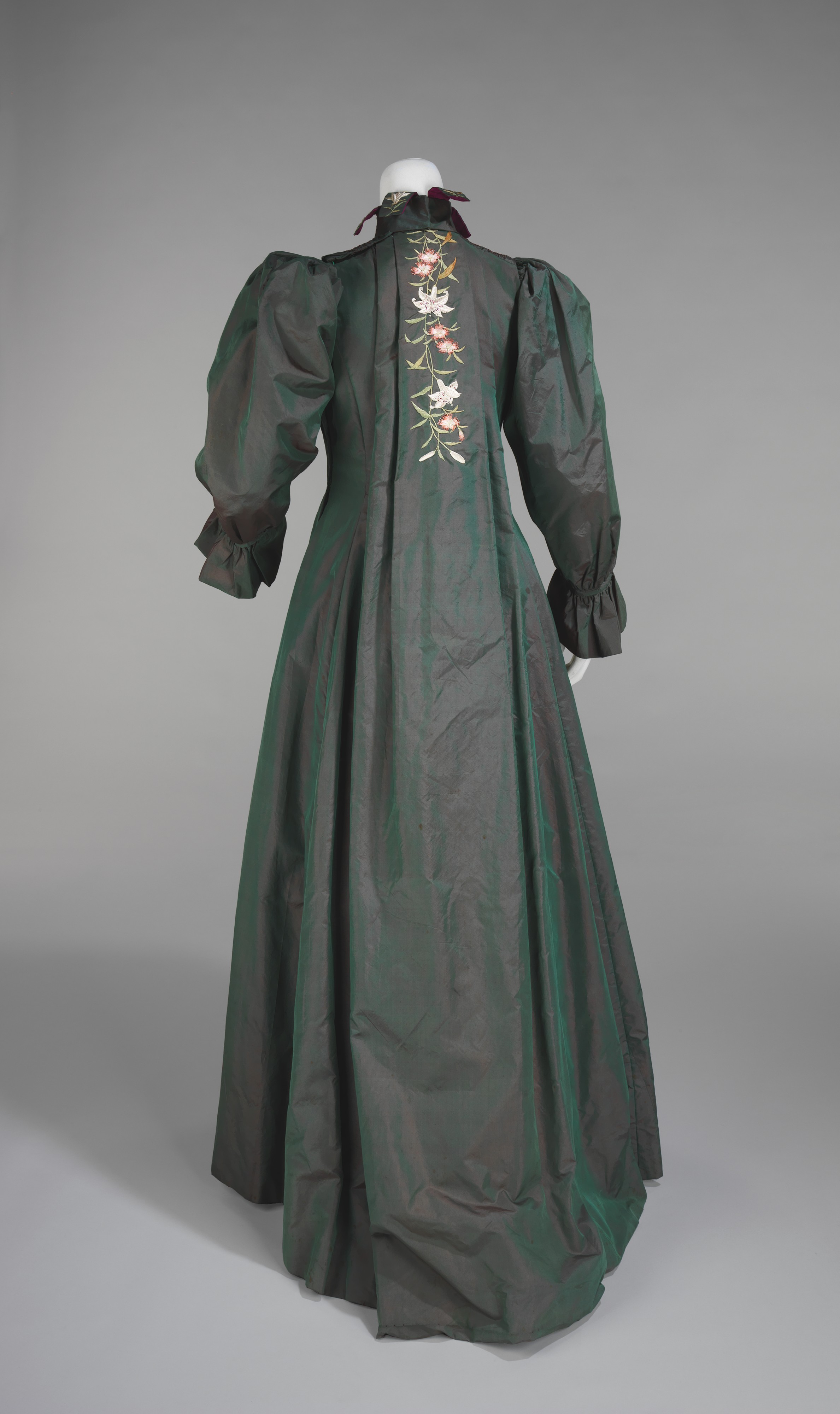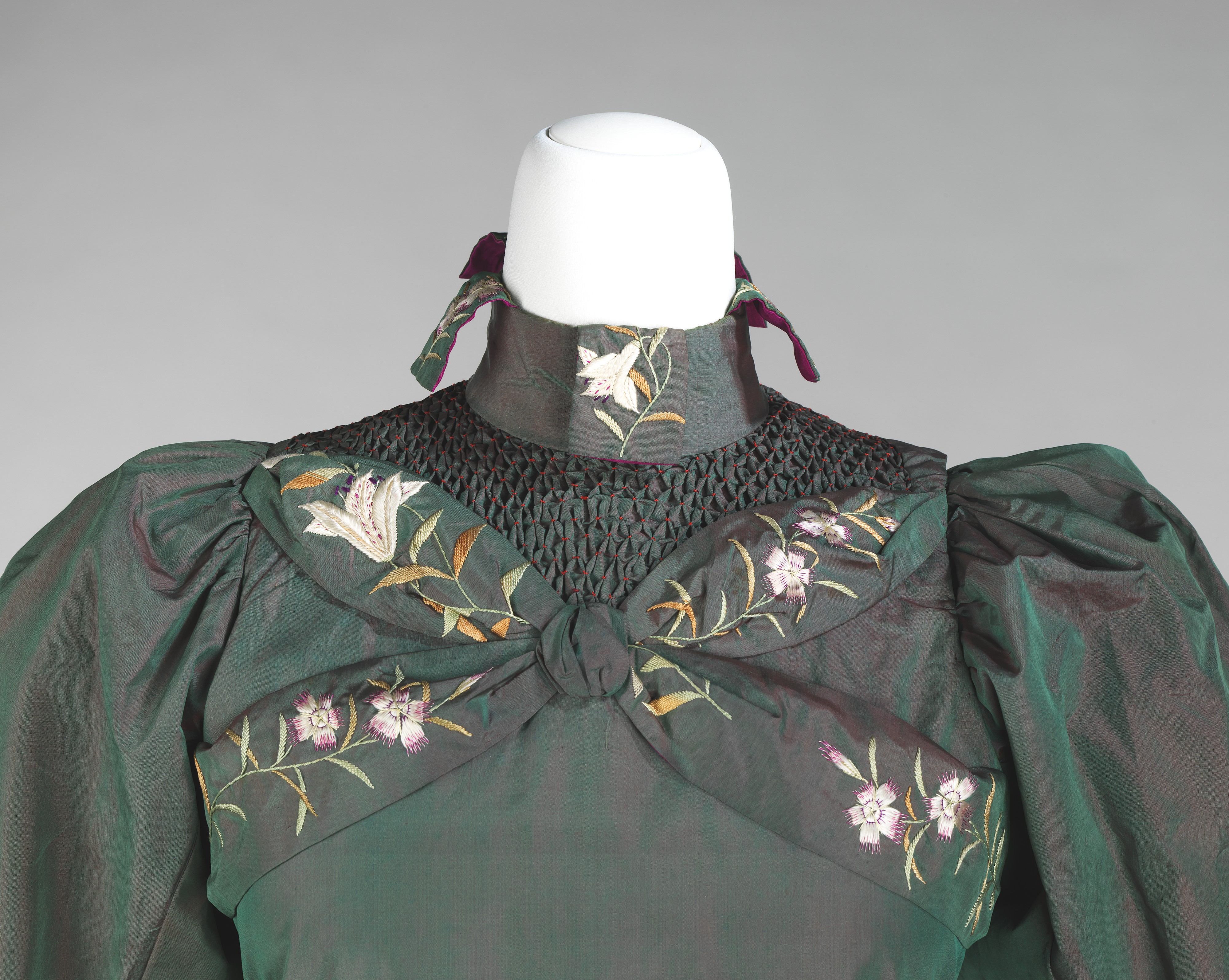Tea gown
Not on view
At the turn of the century in Europe and the United States, women wore tea gowns to receive guests at home. These garments were less formal and structured than day or evening wear, and sometimes show more creative inspiration, such as from historic or Eastern forms of dress. This example bears the influence of embroidered kimonos as well as French eighteenth-century gowns. Interior padding intended to provide warmth and a magenta lining that picks up the purple details of the lilies are signs of superior workmanship, while the garment’s asymmetrical embroidery is in keeping with Art Nouveau design. While the maker is no longer known, the smocking of the bodice relates to the distinctive fashions of the retailer Liberty and Co. then in vogue, and the store might easily have been the source for this gown.
On view from October 22, 2022–February 20, 2023
Due to rights restrictions, this image cannot be enlarged, viewed at full screen, or downloaded.
This artwork is meant to be viewed from right to left. Scroll left to view more.





